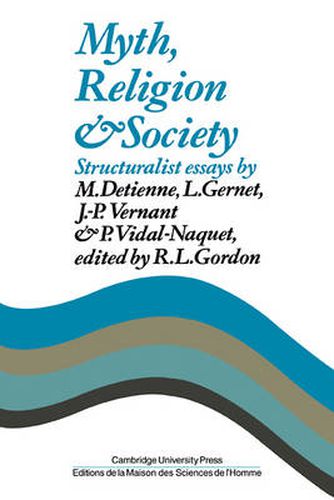Readings Newsletter
Become a Readings Member to make your shopping experience even easier.
Sign in or sign up for free!
You’re not far away from qualifying for FREE standard shipping within Australia
You’ve qualified for FREE standard shipping within Australia
The cart is loading…






The essays in this volume explore different aspects of the relation between Greek myth and Greek thought between the Archaic period (Homer and Hesiod) and the Hellenistic period, highlighting both the continuities and the contrasts in the Greek interpretations and ‘uses’ of myth. With the exception of the essay by Louis Gernet, all bear traces of the authors; attempts to combine older views stemming essentially from Durkheim and his pupils with Levi-Strauss’s version of structuralism. Because the potential field is unmanageably large this selection concentrates on four important areas: the value of Greek myth in revealing the underlying coherence of Greek views of divinity; the manner in which Greek myth constructed meanings for Greek culture as a whole by selecting and combining certain motifs derived from different areas of life; the relationship between myth and delicate areas of social existence such as the nature of the value of certain objects and the passage of individuals from one status to another; and finally, the role of the myth in providing ‘forms’ for breaking rules - both in order to confirm the norm and to provide symbolic and actuals means of escape from dominant social rules and meanings. This book should be of interest to students in a number of disciplines concerned with myth and ancient society.
$9.00 standard shipping within Australia
FREE standard shipping within Australia for orders over $100.00
Express & International shipping calculated at checkout
The essays in this volume explore different aspects of the relation between Greek myth and Greek thought between the Archaic period (Homer and Hesiod) and the Hellenistic period, highlighting both the continuities and the contrasts in the Greek interpretations and ‘uses’ of myth. With the exception of the essay by Louis Gernet, all bear traces of the authors; attempts to combine older views stemming essentially from Durkheim and his pupils with Levi-Strauss’s version of structuralism. Because the potential field is unmanageably large this selection concentrates on four important areas: the value of Greek myth in revealing the underlying coherence of Greek views of divinity; the manner in which Greek myth constructed meanings for Greek culture as a whole by selecting and combining certain motifs derived from different areas of life; the relationship between myth and delicate areas of social existence such as the nature of the value of certain objects and the passage of individuals from one status to another; and finally, the role of the myth in providing ‘forms’ for breaking rules - both in order to confirm the norm and to provide symbolic and actuals means of escape from dominant social rules and meanings. This book should be of interest to students in a number of disciplines concerned with myth and ancient society.